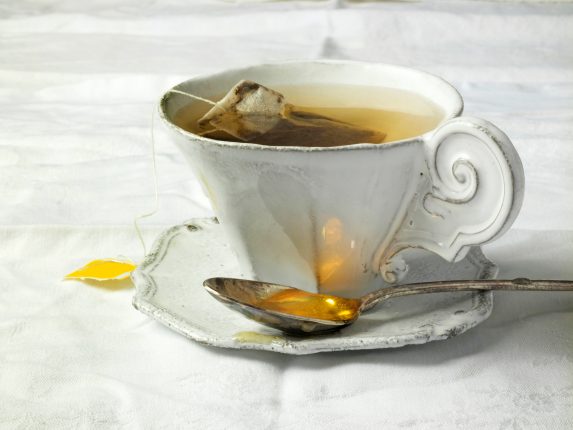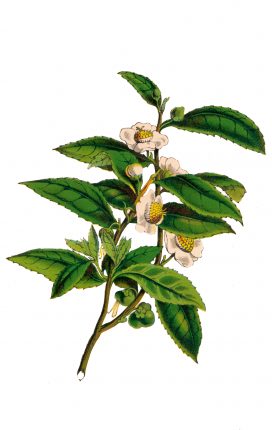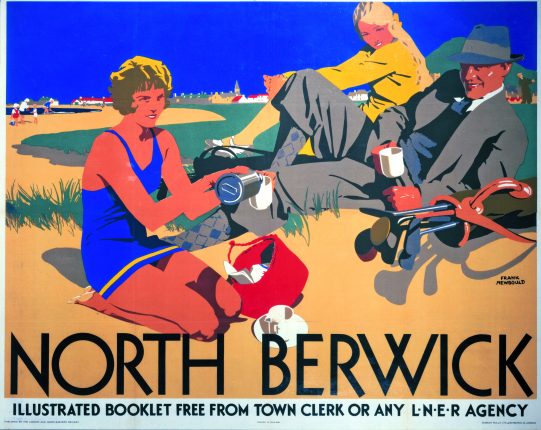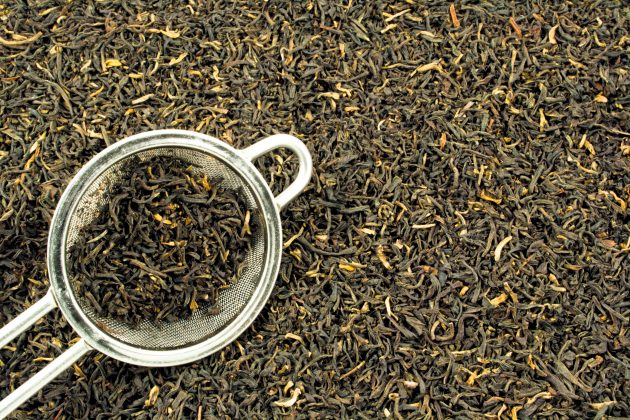The British are famous for their love of a cuppa but the history of tea in this country has distinctly courtly origins says Ettie Neil-Gallacher
The English are not the world’s greatest tea drinkers. This came as something of a surprise to me, having grown up in a house where tea was mainlined from morning until night. And to this day, I still warn people when they visit my mother simply to accept the cup of tea they will undoubtedly be offered within 20 seconds of walking through her front door. If declined, the offer will be repeated in an infusion-based war of attrition until the brew beneficiary caves. While it’s doubtless unsettling to be cornered into a cuppa, it’s weirdly stressful for my mother as she tries to understand why someone might not, always, at any given time of the day, want tea.
Per capita, the world’s greatest consumers of tea are the Turks (who are also the world’s fifth biggest producer). Although we Brits drink 100 million cups a day – that’s just shy of 36 billion a year – the Turks consume 40% more tea than we do in Blighty. And we’re decisively beaten into third place by the Irish, who guzzle over 10% more than us.
While we may only be languishing in bronze medal position, there can be no doubt about the important role tea has played for centuries in our socioeconomic history and continues to do so. Our average daily intake is between two and three cups. We consume it for so many different reasons, in different contexts and in so many different ways, although most these days (97%) use teabags rather than loose-leaf tea. Even my mother has succumbed.

What our ancestors would have made of our societal preference for builder’s teabags dunked in a mug is a matter for speculation, for the history of tea in this country has distinctly courtly origins. And while the taste for tea in the East stretches back for thousands of years, we’ve only been savouring a cuppa for less than 400, lagging behind several of our European neighbours. Portuguese and Dutch traders had brought tea to Europe early in the 17th century, and in those countries tea had become highly fashionable among the smart set many years before we caught on. While it seems likely that tea came to England not long after it reached the Continent, it didn’t really begin to gain traction in the national consciousness until the middle of the 17th century; Samuel Pepys wrote of sending for ‘a Cupp of Tee (a China drink) of which I never had drank before’ in 1660, shortly before Charles II came to the throne.
Come the Restoration, Charles II inherited a great deal of Commonwealth debt, which he was fairly quick to augment. He needed an injection of cash, and so advisers looked around for a suitable (and suitably rich) bride. Catherine of Braganza emerged as the favourite. It wasn’t an obvious match: the devoutly Catholic Portuguese princess and the hard-partying royal rutter didn’t on paper have much in common. But she came with several ships’ worth of treasures, at least some of which could be sold off to ease Charles II’s cash-flow issues. She also arrived at Portsmouth with a chest of tea, for Catherine really loved a cuppa. Feeling a little green after a rough crossing, she asked for her favourite beverage – much to the confusion of the Brits who gave her a draught of ale. It seems unlikely that this did much to quell her seasickness.
Her fondness for tea set a trend at court, which then filtered down to the aristocracy. It wasn’t long before all echelons of society were craving a cup of cha, and so the East India Company, never one to miss a trick, began importing it. The first order for Chinese tea from Java was placed in 1664, and Mincing Lane in the City of London became the centre of the British tea market.

NATIONAL OBSESSION
The London Tea Auction has passed into legend, such was its boisterous nature. Held first at East India House from 1679 onwards, and then at the London Commercial Salerooms on Mincing Lane. The national obsession with tea was such that these were riotous affairs, with bidders indulging in a free-for-all of frantic competition. In response to demand, the auctions became weekly – and the last was held more than 300 years after the first, in 1998.
But in the 18th century, the East India Company’s monopoly meant that prices were high, on top of which the government levied a punishing duty. A pattern emerged whereby the government would raise the duty to fund its wars and then in due course slash them again. We’ve long been an enterprising people, and fond of a bargain to boot, and, being such a light commodity, tea proved easy to smuggle. By the early 18th century contraband activity was rife. Even officers aboard the East India Company East Indiamen boats took advantage of their personal allowance, craftily selling it to offshore smugglers.
As the 18th century progressed, the scale of tea smuggling became more brazen: vast quantities were stowed away and the smugglers were a ruthless bunch. The likes of the Hawkhurst Gang, and the punishments they inflicted on the residents of Fordingbridge in Hampshire who crossed them, might well have inspired the American Mafia. By the 1780s, more or less all tea was smuggled, and the trade proved so profitable that those who might otherwise have pursued quite respectable careers were lured into this illicit trade.
Realising the dent this smuggling was making in its profits, the East India Company joined the chorus of those calling on Parliament for lower tariffs. The 1784 Commutation Act reduced the tax on tea from 119% to 12.5%. As smuggling was no longer lucrative, the illegal dealing of tea pretty much stopped dead. Its popularity soared (though tea adulteration became a problem, with sheep poo and poisonous chemicals being added to make it look convincing) but further legislation, along with the increased window tax, swelled the Exchequer coffers nicely.
TEA CLIPPERS
This meant Britain was well placed to take advantage of the opening up of the tea industry in the second quarter of the 19th century. The Dutch began to cultivate tea in Java and, having found tea plants along the border between the state of Assam in India and Burma, the British began to cultivate it there, using Chinese seeds initially but switching to seeds from the native Assam plant. Less than half a century later, they did the same thing in Sri Lanka (or Ceylon as it then was). As the 19th century developed, teas from India eventually overtook those from China in terms of popularity in Britain. At the same time, the focus became less about getting as much tea to England as the ships could carry but more about the speed. And it was the Americans who pioneered the famous tea clippers – with up to six masts, they swiftly ‘clipped’ the travel time.
The 20th century brought many extraordinary inventions into our lives: air and space travel, computers and microwaves. It also brought us the teabag. In 1908, a tea merchant from New York called Thomas Sullivan decided to promote his wares by sending samples in small silken bags. The recipients thought these were meant to be used like their metal infusers and put the whole bag into the teapot. They weren’t entirely happy with silken bags; several complained that the silk was too fine, so Sullivan created gauze bags instead. But it wasn’t until after World War I that they were developed on a commercial scale.

The British were resistant to such American swagger. Indeed, it wasn’t until the 1950s, after the privations of World War II, that they began to embrace the bag. Tetley introduced teabags in 1953, but a decade or so later they still only accounted for 3% of the market. However, within 40 years that number had risen to 97%. I wonder for how much of the figure my mother is responsible.
CHINA & JAPAN
As befits a product with a history that stretches back 5,000 years, tales of its origins swirl around different cultures like tea leaves. However, it would seem that China can lay claim to having discovered tea. The legend goes that in 2737BC, Emperor Shen Nung had a side hustle as a herbalist. One day, he was sitting beneath a Camellia sinensis tree while his servant was boiling water for drinking. When the wind blew, it sent leaves from the tree into the water, which turned a golden colour and gave off a pleasant aroma. Shen Nung decided to try the drink and found it delicious – and exclaimed “t’sa”, which means ‘godlike’. To this day, tea in China is called cha.
While the story is almost certainly fanciful, tea was well established in China centuries before it was heard of in Europe, though it wasn’t until the Tang dynasty (AD618-AD906) that tea became the Chinese national drink. Under the Ming dynasty, tea underwent a renaissance, and it was first made by steeping loose leaves in boiling water.
By this time, however, a rival tea culture was brewing. Buddhist monks had introduced tea to Japan, though it didn’t really take root in Japanese culture until the 12th century. Eisai, a monk, returned from China and he and his confrères used tea largely for medicinal purposes, preparing it in a ritualistic, zen fashion, which to this day lies at the heart of the Japanese tea ceremony.
Early tea ceremonies could be bawdy affairs, involving boozing and gambling, but several tea masters refined the event. The most influential of these was Sen-no-Rikyū, a zen master, who in 1570 laid down four principles: harmony, respect, purity and tranquillity.
The Japanese tea ceremony involves the preparation, presentation and drinking of matcha tea in a traditional tea room, and a full ceremony can take hours, involving food and different teas. There’s lots of bowing – the entrance to the tea room is often low to encourage bowing upon arrival, and participants bow before the ceremony begins too.

BOSTON TEA PARTY
With pretty much all tea smuggled into Britain, the East India Company’s monopoly on imports meant it had a huge surplus to deal with. At the same time, it was hugely in debt – at one point it owed the government £1m.
But the East India Company saw a way out: the colonies. In America, tea was as popular as it was in England. The government wanted its money back, so it permitted the East India Company to devise a winning formula: all tea had to be imported into America by them and from England. On top of that, the British government levied a duty of 3d per pound.
What the Brits hadn’t realised was how much the Americans resented paying any duty at all to a government it felt didn’t represent them. And one day in November 1773, when four English ships were preparing to dock with their precious cargo of tea, the good folk of Boston felt they’d had enough. The customs officials signed the paperwork for the first boat, which meant they couldn’t return to England, but the townsfolk wouldn’t let them bring the tea ashore without an agreement that they didn’t need to pay any duty on it.
The stalemate continued for six weeks until one night, a group of men stormed the ships (some in blackface in a bid to impersonate Native Americans), whooping and hollering, and threw the tea – all 342 chests – into the briny deep.
The Boston Tea Party would have lasting implications for both Britain and America. The revolt in Boston inspired further insurrection, culminating in the victorious War of Independence.




